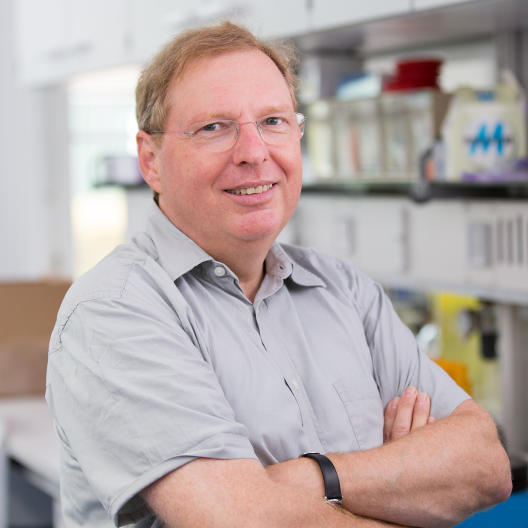“We do research to benefit patients”

Prof. Roth, what scientific topic are you working on right now?
At our institute we’re looking at the causes and triggers of inflammatory reactions. We also want to find out what leads to inflammations often developing chronically. Our focus is on cells of the innate immune system, the phagocytes. These are the cells in the initial immune response which recognize pathogens, enclose them all around and then “eat them up”. If they are activated in an uncontrolled way, however, they can also become responsible for many diseases. We look at inflammation processes on the molecular level and have already identified molecules which trigger and strengthen inflammatory reactions. They belong to the group of proteins of the so-called alarmins. We are also trying to demonstrate the clinical relevance of our data to a variety of diseases. These include rheumatoid arthritis as well as infections, inflammatory intestinal diseases or allergies. What we’re also interested in are rare illnesses such as the so-called autoinflammatory diseases. These are severe chronic inflammations which have no demonstrable cause. They can already occur in childhood and adolescence, and their cause is mostly unexplained.
What characterizes you personally as a scientist?
What characterizes my team and myself in particular is, that, even though we’re dealing with basic mechanisms, we always direct our research very much towards the patient. This type of work has always interested me. Even while I was thinking about what to study, I couldn’t decide whether to choose natural sciences or medicine. I first studied chemistry and then decided to do medicine. After I graduated I worked for years as a paediatrician parallel to my work as a basic researcher. Finally, I concentrated on research completely.
What is your greatest aim as a scientist?
What I would like to do is discover mechanisms and develop methods which lead to diagnostic or therapeutic processes in clinical practice. We do research to benefit patients. And therein lies the strongest motivation for me in investigating rare inflammatory diseases. On the one hand, during my work in a hospital I saw just how much these serious illnesses restrict patients’ quality of life. On the other hand, rare diseases are often neglected and there is a lot of catching-up that needs to be done in research. Also, the molecular mechanisms behind them are highly interesting, from a scientific point of view, and often have a bearing on frequently occurring diseases.
Can you remember your happiest moment as a scientist?
There have been a lot of really wonderful moments in my scientific career. One of them was certainly the time when we were able to develop a biomarker which made it possible to diagnose Systemic Juvenile Idiopathic Arthritis better, which is an autoinflammatory disease in children. Ultimately, the consequence of this has been that now we are able to apply a much faster and more targeted therapy for seriously ill children. In the old days, this often took weeks or months.
And what was your biggest frustration?
In research there are often situations in which things don’t work out. But this isn’t really that frustrating, because it’s all a part of research work. What is more frustrating is the increasing bureaucracy which we researchers have to cope with on a daily basis and which affects not only our everyday work but also our overall research. Unfortunately, this development is deterring young colleagues more and more from staying in research.
Which scientific phenomenon still regularly fascinates you today?
What fascinates me most of all is the ability our body has to regulate inflammations all by itself. A normal inflammatory process in the body automatically comes to an end at some point. If we could understand what mechanisms are behind it, then future therapies could be designed to be much more efficient and have fewer side-effects. But first, of course, we have to understand the relevant regulatory mechanisms before we can put them to any therapeutic use in the next step.
How much artistry, creativity and craftsmanship is there in your scientific work?
I think the term “artistry” is a bit too much in connection with research. Creativity and craftsmanship, on the other hand, are certainly the creative components that characterize research and which are a part of our daily work. Transferring creative ideas into craftsmanship – in other words, into experimental activities – is what is ultimately difficult in my view. But also it’s absolutely the most appealing thing about scientific work.

